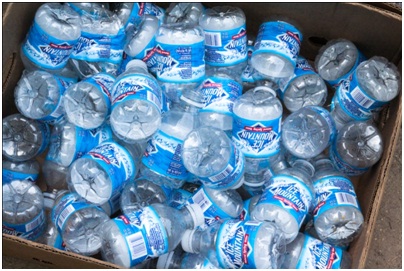Biodegradable Plastic is derived from the renewable raw materials and it will be decomposed slowly in the natural environment. Plastic degradation can be completed by allowing microorganisms in the environment to metabolize the plastic films metallic structure to produce environment harmless materials. However, biodegrade plastic will help to avoid the non-renewable resources. It will degrade over time if it is exposed to sun and air.

Biodegradable Plastic: It’s pretty neat!
Microorganisms can convert Biodegradable plastic into water, biomass, and carbon dioxide. It can be used in manufacturing of food containers, eating utensils, and compostable bags. This kind of plastic can be degraded if it is composted properly. If you are not capable to do composting, recycling and reusing are also generally sustainable options. Another good practice is to reduce the usage of plastic overall. Less plastic is better than biodegradable plastic. So, make smart decisions!
Biodegradable, is not it sounds environmentally-friendly? Yes, Right?
Biodegradable plastics are much better for the environment as they do not cause much harm to the earth when recovering fossil fuels. This process involves very few greenhouse gas, and harmful carbon emissions. While regular plastics need oil for their manufacturing that pollutes the environment.
Here are the 10 surprising secrets of Biodegradable Plastic:
1) Biodegradable plastic bags can harm the environment
In the absence of air and moisture, decomposition process happens much slower. In this procedure, Methane gas is released and landfills are the third largest source of methane. It may be noted here that methane gas contributes 20 times more to the greenhouse effect than carbon dioxide over a 100 year period.
2) These bags are more expensive.
3) They are not as strong as conventional plastic bags
4) The bags can’t be recycled with other plastic items
5) Most degradable plastic bags end up in landfills where nothing biodegrades.
6) Biodegradable raw material is at least 3 times more costly than conventional plastics.
7) Carrier bags degrade very slowly under natural condition.
8) Biodegradable bags do not degrade under ocean marine conditions.
9) The biodegradable bag’s ‘biodegradability’ perception encourages littering
10) Biodegradable plastic contaminate conventional recycling streams.
Biodegradable Plastic contains many advantages such as cost, functionality, durability, and weight. Here are the major advantages of this plastic:
1) It takes less time to break down
2) It is renewable
3) It is good for the environment.
4) It requires less energy to produce
5) It is easy to recycle
6) It is not toxic
7) It reduces dependence on foreign oil





